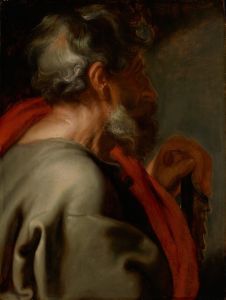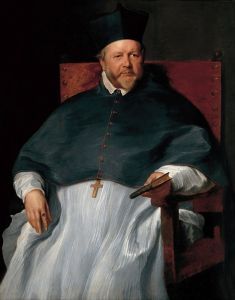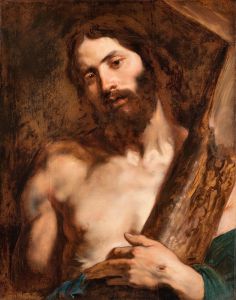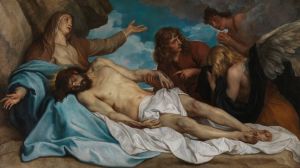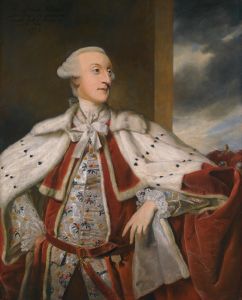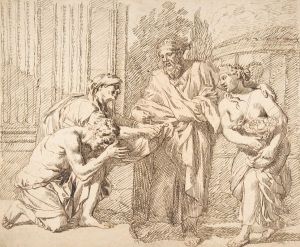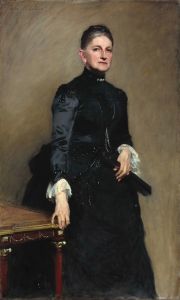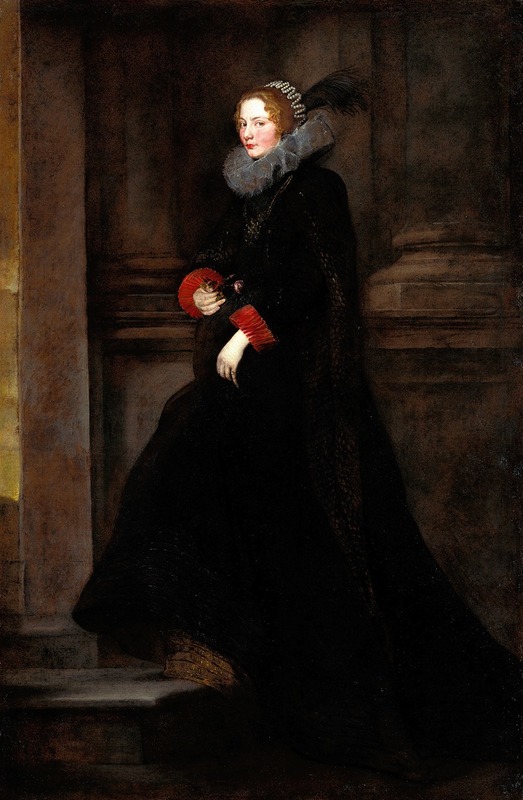
Marchesa Geronima Spinola
A hand-painted replica of Anthony van Dyck’s masterpiece Marchesa Geronima Spinola, meticulously crafted by professional artists to capture the true essence of the original. Each piece is created with museum-quality canvas and rare mineral pigments, carefully painted by experienced artists with delicate brushstrokes and rich, layered colors to perfectly recreate the texture of the original artwork. Unlike machine-printed reproductions, this hand-painted version brings the painting to life, infused with the artist’s emotions and skill in every stroke. Whether for personal collection or home decoration, it instantly elevates the artistic atmosphere of any space.
Anthony van Dyck's "Marchesa Geronima Spinola" is a portrait painting created by the renowned Flemish Baroque artist during his prolific career. Van Dyck, who was born in 1599 in Antwerp, was a prominent portraitist known for his ability to capture the elegance and sophistication of his subjects. He was a leading court painter in England and had a significant influence on the development of English portraiture.
The painting "Marchesa Geronima Spinola" is a testament to van Dyck's skill in portraying the aristocracy of his time. The subject, Marchesa Geronima Spinola, was a member of the Spinola family, a prominent and influential noble family in Genoa, Italy. The Spinolas were known for their wealth and power, and they played a significant role in the political and social life of Genoa.
In this portrait, van Dyck captures the grace and poise of the Marchesa, showcasing his mastery of texture and detail. The painting is characterized by its refined elegance and the subtle interplay of light and shadow, which are hallmarks of van Dyck's style. The Marchesa is depicted in luxurious attire, indicative of her high social status. Her clothing is rendered with meticulous attention to detail, highlighting the rich fabrics and intricate patterns that were fashionable among the European nobility of the time.
Van Dyck's use of color in this portrait is particularly noteworthy. He employs a palette that emphasizes the opulence of the Marchesa's attire while also drawing attention to her serene expression. The background of the painting is kept relatively simple, allowing the viewer to focus on the subject. This compositional choice is typical of van Dyck's portraits, where the sitter is often the central focus, set against a backdrop that enhances their presence without distracting from it.
The portrait of Marchesa Geronima Spinola is an example of van Dyck's ability to convey the personality and status of his subjects. His portraits are not merely likenesses but are imbued with a sense of the individual's character and social standing. This ability to capture the essence of his sitters made van Dyck one of the most sought-after portraitists of his time.
Today, Anthony van Dyck's portraits, including "Marchesa Geronima Spinola," are celebrated for their artistic excellence and historical significance. They provide a window into the world of 17th-century European nobility, offering insights into the fashion, culture, and social dynamics of the period. Van Dyck's influence on portraiture extended beyond his lifetime, as his techniques and stylistic choices continued to inspire artists in subsequent generations.
The painting is housed in a collection that appreciates the historical and artistic value of van Dyck's work, ensuring that it remains accessible to art historians, scholars, and the general public. Through his portraits, van Dyck left an indelible mark on the art world, and "Marchesa Geronima Spinola" stands as a testament to his enduring legacy as a master portraitist.








